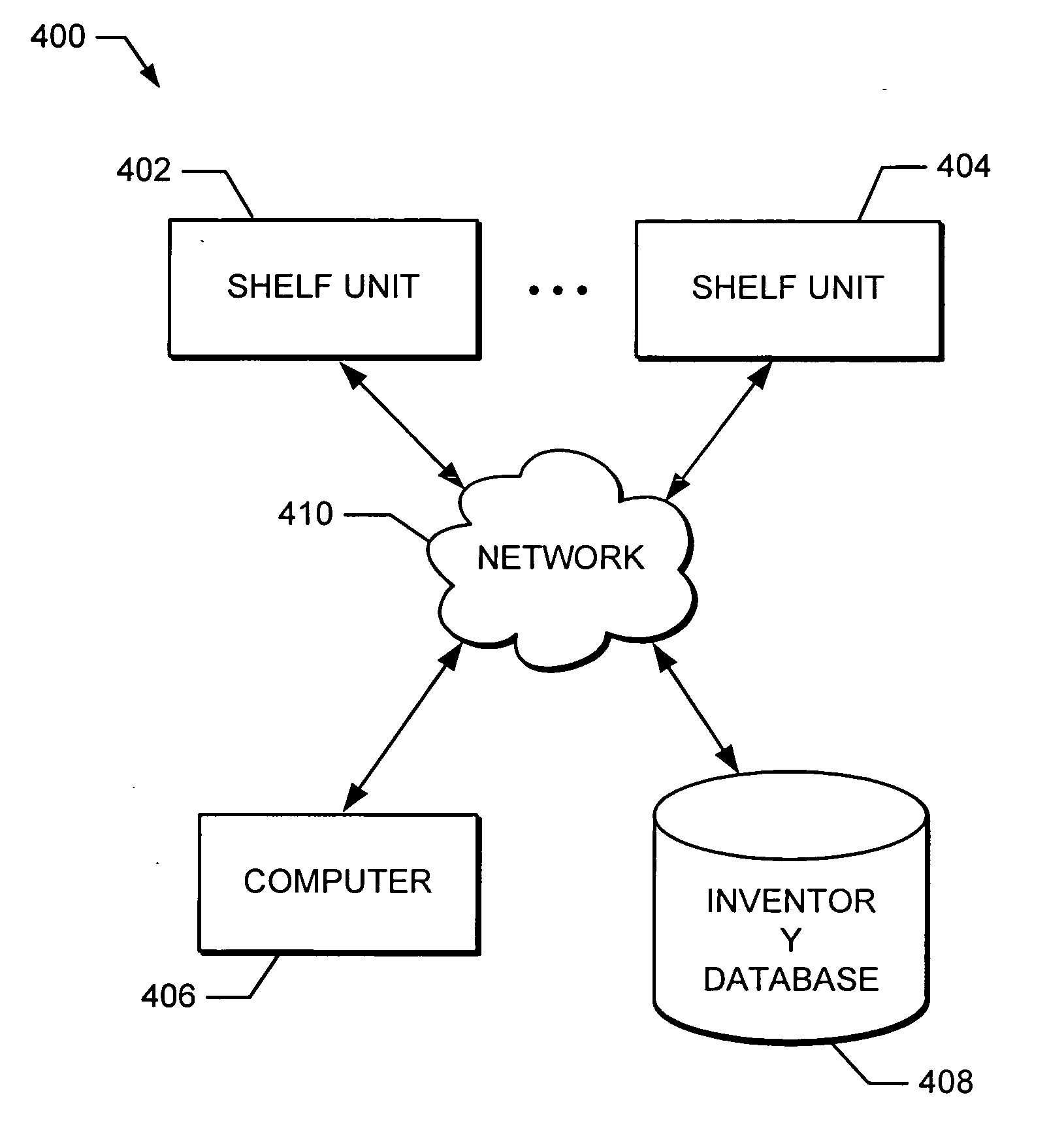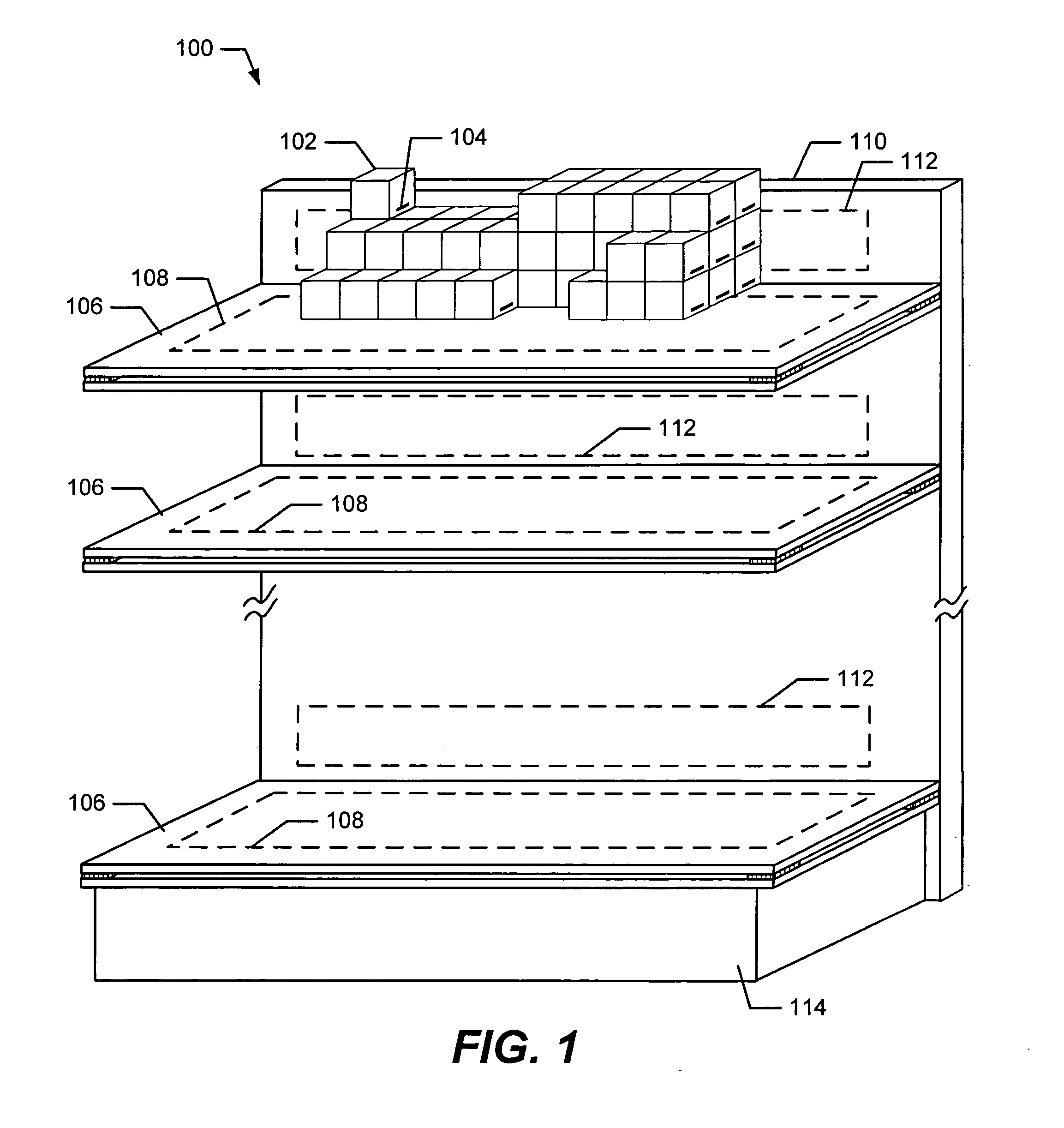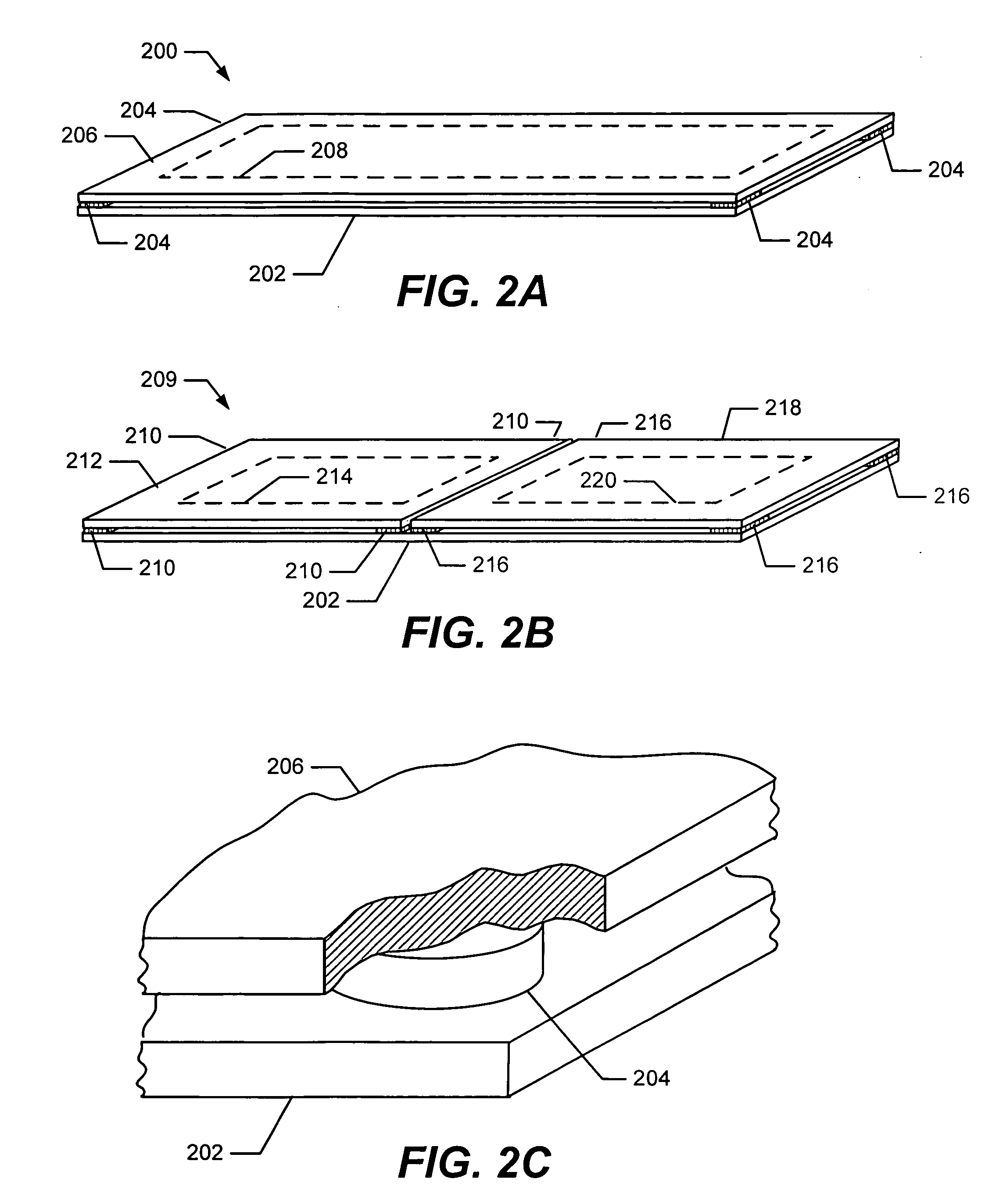Load sensing inventory tracking method and system
a load sensing and inventory tracking technology, applied in the field of radio frequency identification (rfid) tags, can solve the problems of difficult interrogator reception, weak signal, and relatively weak signal of tags
- Summary
- Abstract
- Description
- Claims
- Application Information
AI Technical Summary
Problems solved by technology
Method used
Image
Examples
Embodiment Construction
[0015] Implementations of the present invention concern the use of load sensors working in conjunction with RFID interrogation to determine the number of tagged items stored in a particular locality. For example, a retail display might feature a shelf containing a number of containers of shampoo, each container identified by an attached RFID tag. Because shampoo and other products may attenuate or reflect radio energy, the RFID interrogation of some tags may be problematic, making the determination of the number of tagged items difficult. Implementations of the present invention solve this problem by both weighing the aggregate of the product and using RFID interrogation to accurately identify the product and its unit weight. The unit count is determined from the aggregate weight and the unit weight.
[0016] Aspects of the present invention are advantageous in at least one or more of the following ways.
[0017] Implementations of the present invention allow products that are identifie...
PUM
 Login to View More
Login to View More Abstract
Description
Claims
Application Information
 Login to View More
Login to View More - R&D
- Intellectual Property
- Life Sciences
- Materials
- Tech Scout
- Unparalleled Data Quality
- Higher Quality Content
- 60% Fewer Hallucinations
Browse by: Latest US Patents, China's latest patents, Technical Efficacy Thesaurus, Application Domain, Technology Topic, Popular Technical Reports.
© 2025 PatSnap. All rights reserved.Legal|Privacy policy|Modern Slavery Act Transparency Statement|Sitemap|About US| Contact US: help@patsnap.com



